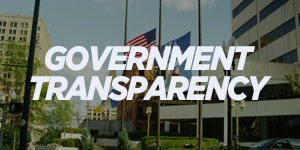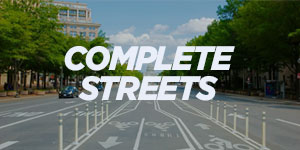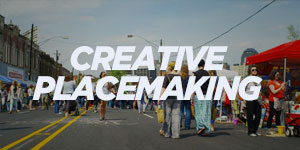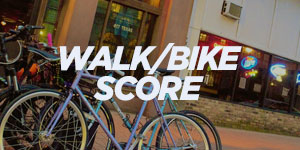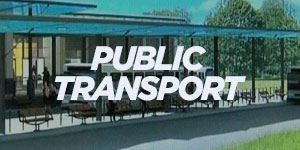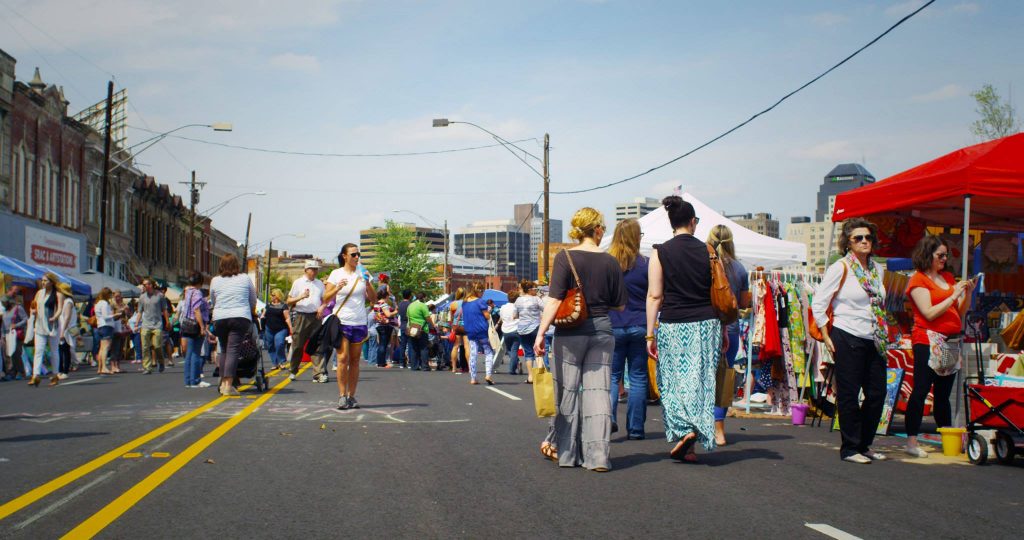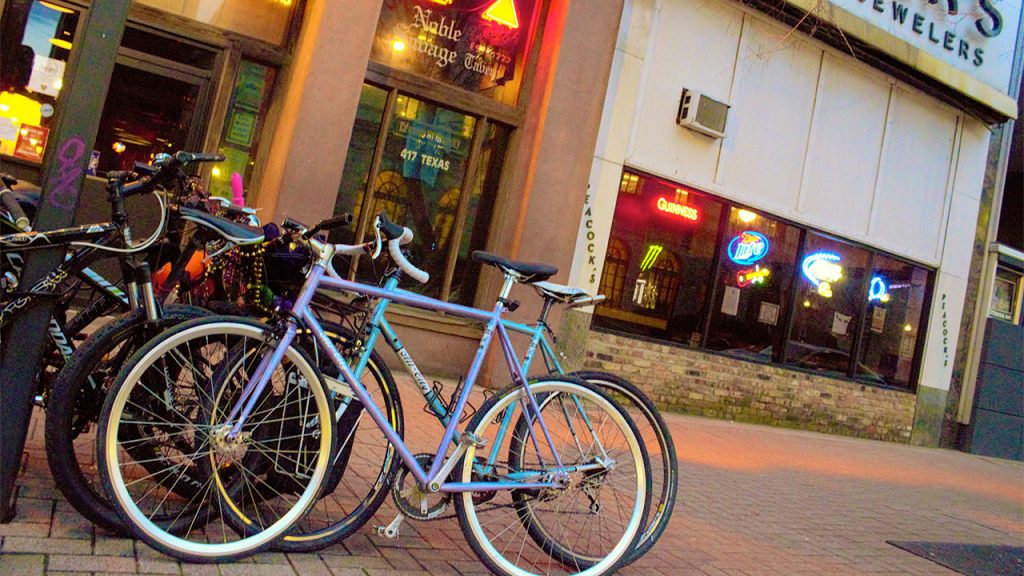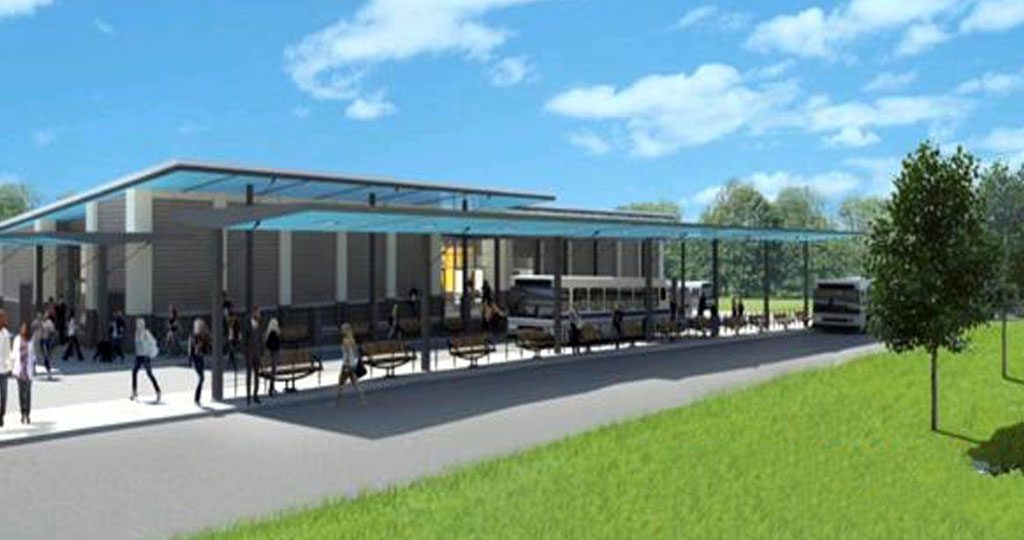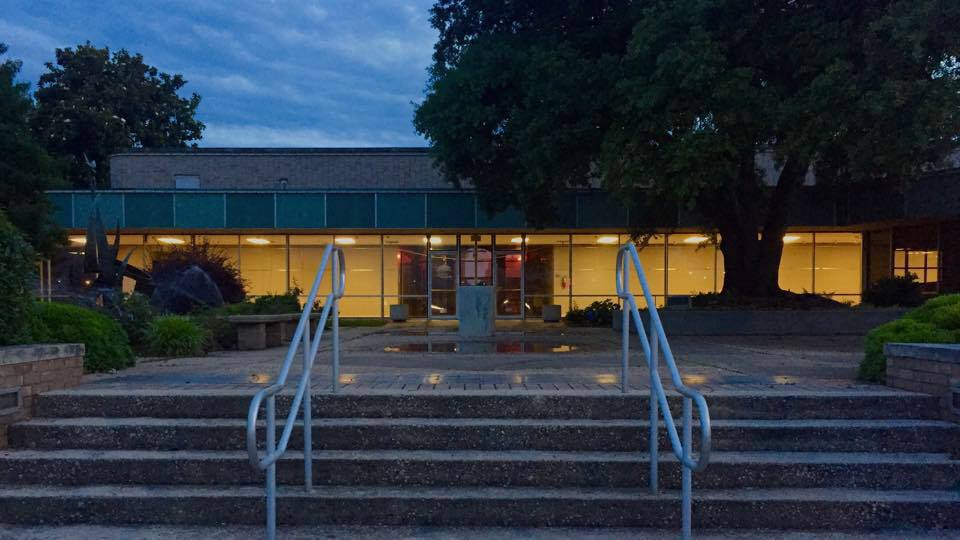Foreword: What You Can Expect of Us, and What We Expect of You
The City Progress Report is an opinion-based, “living” document. Because it is living, it changes regularly based on new ideas and information. This is not simply a place where the status of projects are exhibited for your viewing. As you will see, some ideas we have currently have no real progress to report at all. Rather, it is a place where we have written down our expectations of our leaders and the community to make these ideas come to life. We know that not every idea or neighborhood is represented right now. To this point, we welcome your ideas, comments, corrections, and criticisms with open arms. If you would like to add yours, please email chris@heliopolis.la.
The timelines and dates mentioned are ones we believe are achievable and do not necessarily line up with our city leaders’ current plans. Whatever accomplishments are shown, there is more to be done and we’ve attempted to outline where the city and parish fall short. Your help in making these expectations of excellence known to your representatives in the city and parish leadership is the ONLY WAY these dreams will become reality. Do not idly look at this information and believe it is being done FOR you. It is being done BECAUSE of you. Because you expect and demand it. Make your expectations known and demand their proper and complete implementation today.
Select a Topic to Find Out What Needs to Be Done
Reach Out, Make Them Hear You
505 Travis St., Suite 200 Shreveport, LA 71101 (318) 673-5050
[/vc_cta]505 Travis St. Shreveport, LA 71101 (318) 673-5262
[/vc_cta]505 Travis St., Suite 800 Shreveport, LA 71101 (318) 226-6900[/vc_cta]
Introduction
Five years ago, one could accuse Shreveport-Bossier City of being too far behind the times, and be totally correct. Today, that’s no longer wholly the case as our cities move into the 21st century – albeit the early 21st century – with amenities and services other cities our size have enjoyed for years.
If there’s one thing the mayoral and city council elections taught us in 2014, it is that younger, creative people are increasingly becoming more vocal about their desires for the future of the city. Predominantly an industrial city throughout the majority of its history, Shreveport has recently seen a massive increase in creative professionals and artisans from many disciplines – from technology to painting, photography, theater, film, music, food… you name it. The creative wave that’s beginning to crest in our region is a glorious sight to behold.
If we learned anything from the 2015 Caddo Commission, District Attorney, Sheriff, and other races, it’s that currently we, the citizens, are not at the wheel of our own destiny. Interests from outside our city, as well as from within, seek to steer our community. Low voter turnout confirms that we as citizens know this to be true. The question has become “What will do about it?” and not a moment too soon.
With all of the freneticism, some – including us – were lost in the terminology being used to describe the things we wanted to see in our community and where exactly we stand at this moment point in time. The terms below outline ideal technical thresholds for measuring our success and pitfalls to avoid in manifesting a new city. When understood, they convey a powerful view of a lifestyle we have yet to achieve in NWLA. We will take the time to define each of the terms we think you need to know to effectively communicate how you want your city grow, and to be able to inform others on how to share the ideas that will make our cities better places to live.
The kind of opportunity provided for a complete community embodied in these terms or in the challenges they define is enormous. Change doesn’t come without hard work. Some of that work is already underway, some of it is misguided and in need of redirection. The ownership of one’s community requires that we all work hard to foster amazing places to live by cultivating local and culture-rich businesses; city amenities like parks, walkable paths, public transportation, and bike lanes; and entertainment opportunities by participating in what we already have, thereby creating a demand and a culture surrounding the things we want to see in the future. Show up at City Council meetings if you can and make your voice heard. Write letters, be informed. Attend things! The community we want to exist will not simply appear before our eyes, it must be worked for and the responsibility falls on us to manifest the kind of place we want to live, work, and play in.
Let’s begin.
Government Accountability: City/Parish Transparency and Communication
One of the most important things for any community is that everyone knows what’s going on, even if they don’t agree with what’s happening. Citizens cannot determine the efficacy of their elected leadership unless information is being shared with them. Part of what makes Shreveport a city of – and Caddo a parish of – inaction is the lack of availability of information, accessibility, and metrics against which to measure their government’s success.
In 2015, Mayor Ollie Tyler released her four-year Strategic Plan for Shreveport after six months of internal auditing. The list of goals is long and we are continually reviewing it for points of interest and doing our own investigation into what it might take to get some of the things done that have been mentioned. Certainly some of the proposals indicate the need for more revenue, but from where and when have yet to be announced. That said, there are a lot of milestones that are defined in the strategic plan against which we can compare progress on. This is a MASSIVE step for Shreveport’s leadership to take, but it must be followed by action and accountability to the citizens – something the citizens must ask of our leaders. We fully expect that Tyler will adjust the plan as it goes forward, but we hope that it happens in broad daylight and with an honest assessment of where we are and how we’re going to get there.
One thing Tyler’s administration could do would be to install and utilize a current city dashboard software which would allow citizens access information about their city as well as the ability to download important documents such as city budgets, proposals, alerts, city council minutes, and more through an online portal. This kind of dashboard exists, but is poorly organized and managed. PDF documents aren’t searchable many times and documents are poorly designed or improperly digitized, making it difficult to understand or even read. A new, properly-managed City Dashboard would allow you to interact directly with City Hall without having to wait for the news to circulate a story about it. Notifications of new information could be persistent inside an account you create, allowing you to customize the information sent to you.
Adding to the difficulty of participating in your local government, City Council and Caddo Commission meetings currently take place on weekdays during normal business hours meaning citizens wishing to participate are expected to take off work to be present. The Caddo Commission has also been known to hold votes in secret, behind closed doors. This type of behavior doesn’t foster the kind of interaction with our government that citizens deserve and creates an air of inaccessibility to our leadership that breeds inaction.
Additionally, the city and the parish make very little effort to make sure progress of goals and ideas are shared with the community. Oftentimes news of progress (or a lack of it) comes only from local news following a lead on a story of failure or controversy. Citizens are actively left out of crucial decision-making parts of the process and are, more often than not, only presented with a completed plan with the appearance of input.
Tasks Our Leaders Must Complete
– Make information available in a timely, universally-accessible, and searchable format for all government business – including, but not limited to, memos, reports, work orders, bids/awards, notation of private meetings (who, when, where, to discuss what?), transcripts of public meetings, edicts, and proclamations.
– Make a concerted (meaning eventful and in full view of the citizens) effort to inform the public of intentions, assessments, executions, delays, deferments and other decisions over a given periods of time, preferably monthly from the Caddo Commission and City Council, quarterly by the mayor’s office, and semi-annual reports (twice a year) by other city organizations and partnerships including utilities (including internet), parks, police, fire, and other important organizations. Think of this as a state of the union for our city that happens more regularly than once a year.
– Move Caddo Commission and City Council meetings to 5:30pm, where average citizens can attend and voice their opinion without having to leave a day job to attend.
– Make all mayoral announcements and proclamations that affect citizens (non ceremonial events) before 9am or after 5pm with the expectation of news coverage at 6pm and/or 10pm and coverage the next morning.
– Bonus: The news media is expected to put emphasis on happenings at city hall by making local news of progress and plans a key part of their broadcasts and publications.
What’s Been Accomplished?
A Strategic Plan for Shreveport has been released (linked above) and measurable goals have been defined by Mayor Tyler. Some individuals, advocacy groups, and media outlets are beginning to scrutinize decisions and outcomes moreso than they have in the recent past, but these revelations aren’t reaching a large segment of the population.
What’s Left To Do?
Nearly none of the ideas we talk about above have been started on. However, some government documents are online (although it takes an inordinate amount of time for them to become available) – city council transcripts and the aforementioned Strategic Plan – but many other documents are not searchable or text-based making it hard to locate information quickly.
Our ETA
Summer 2017 is a reasonable time frame for all of our goals if an effort is made. These decisions are purely ones based on choices we make and require no new infrastructure, but may require minor changes to staff work schedules for meeting and announcement changes.
Complete Streets: Safe, Effective, and Inclusive Transportation for All
When you find yourself dreaming of being able to move around Shreveport like a modern 21st century city, things like bike lanes, streetcars, and other alternative transportation means are probably what come to mind. Complete streets means exactly what it sounds like it means – streets which are complete in their functionality and accommodation of multiple modes of transportation. For a street to be complete, it needs to accept motor vehicle traffic (cars and trucks), accommodate bicycles, and have ample, handicap-accessible sidewalks with crossings and push-button walk signals that actually work. Additionally, complete streets may have more narrow lanes (called a “road diet“) to encourage slower driving, increasing safety. Streets can be complete in a variety of ways depending on the amount of traffic. Depending on the availability of space, placement in the city, and the composition of surrounding businesses, complete streets can also include dedicated bus lanes, or light rail trains like is found in Austin or Houston.
As we move forward, we need to ensure that the planning and execution are done by professionals who understand the point of accomplishing the spirit of an initiative, not just checking a box and moving on. Louisiana Department of Transportation and Development has adopted a complete streets policy, along with other governments in Louisiana. New Orleans is leading the way, by working their policy into a full-fledged law. The City of Shreveport, The Parish of Caddo, NLCOG, and the MPC have adopted Complete Streets resolutions. These don’t hold much water, but they do allow us as citizens to force a higher level of accountability upon our local governments.
Suggestions for variations on complete streets can be found in several places within Shreveport-Caddo’s 2030 Master Plan and the upcoming Bicycle and Pedestrian Master Plan. In the spring of 2017, the Highland Bike Lane Pilot Program was unveiled at a public meeting. Read the details of the project here.
Local government needs to continue to engage all facets of the public and push for Complete Streets projects to be implemented with every new development, redesign, and update such as the Youree Drive intersection update which is currently under construction yet does not include a complete streets approach. The challenge? Turning these resolutions into policy, then laws.
Tasks Our Leaders Must Complete
– Create 5 miles of bike path based on the study Bike/Ped Master Plan by Summer 2017 (one road in two directions is considered one unit, not two) connecting neighborhoods, parks, and essential businesses like grocery stores. This would be accomplished if the Highland Bike Lane Pilot Program is completed. Commit to 15+ miles by end of 2018.
– Create a plan for putting our roads on a diet in order to make room for bikes and to reduce travel speed in strategic areas where increased safety would benefit the surrounding areas and businesses. Decide which roads offer the most connectivity and create paths for people to move without cars. We could start with pedestrian thoroughfares like Gilbert and Creswell – parts of which don’t even have sidewalks.
– Create and execute a plan to install and repair sidewalks city-wide. Fix sidewalks damaged by tree roots and shifting ground.
– Analyze and implement new locations for crosswalks to encourage walking. Protect citizens by putting in road graphics and signage to alert drivers to upcoming crosswalks that don’t occur at stoplight intersections. Major crosswalks should have walking signals.
– Creation of a marketing campaign to make drivers, bikers, and pedestrians more aware of each other.
What’s Been Accomplished?
When looking at what has already been accomplished, there are a few glimmers of hope. The Highland Bike Lane Pilot Program is a good start, but development must accelerate from here forward. While bike lanes are a big step, there is next to no progress on physical implementation of a Complete Streets concept. Vehicle driver awareness of bikers and pedestrians is low and, coupled with the lack of crosswalk options in certain neighborhoods, has resulted in injuries and deaths. Local governments have adopted Complete Street “resolutions” and studies have been performed, but we must push these to actual policy, then laws.
What’s Left To Do?
Demand local governments to translate years of studies and public input meetings into smart, measurable action. Policies need to be put in place such that every new development will be required to design with complete streets in mind. In downtown, ample sidewalks exist, but other key neighborhoods may lack sidewalks entirely. Streets are badly damaged and repairs are stymied by the City Council’s inability to pass a budget that isn’t mired in completing debt service obligations by robbing Peter to pay Paul.
While complete streets have been proposed in the Shreveport-Caddo Master Plan 2030 and the forthcoming Bicycle and Pedestrian Master Plan, no usable bike lanes have been installed and pedestrians take a back seat to vehicle traffic by design and by driver culture. This soon may change, but until it does, it remains a “to do”.
Our ETA
2 years if an effort is made for 20 miles of bike lanes and a visible start to a commitment of complete streets. Given recent developments, we know it is possible. Due to our city’s size and lack of corresponding taxpayer population, this process is likely to roll out by sectors that will use it most – Downtown, Ledbetter Heights/Allendale, Highland, and South Highlands before reaching farther south and west. This process will always be ongoing.
Creative Placemaking: Business, Art, and Culture… Combined
This term and its intended impacts, encouraged by the National Endowment for the Arts, means leveraging the community’s public, private, non-profit, and community entities to create a creative, social environment which draws people to it. Creative placemaking can be focused in a neighborhood or district, or it can encompass the entire city, each possibility with its own focus and degree of influence.
Much like what we saw with SRAC’s UNSCENE series, the Texas Avenue Makers’ Fair, the Shreveport Farmers’ Market, or the DDA’s PopUP shops downtown, the NEA describes creative placemaking as a community effort to “animate public and private spaces, rejuvenate structures and streetscapes, improve local business viability and public safety, and bring diverse people together to celebrate, inspire, and be inspired.” The Prize Family – Film Prize, Startup Prize, and Music Prize – embody these very principles by engaging artisans to participate in creation, community building, and economic impact.
This nexus of placemaking concepts is essential to a community so focused on the arts as we are. Continuing to support this way of life shows those looking for a home or considering leaving what Shreveport and Bossier City have to offer culturally and economically.
Tasks Our Leaders Must Complete
– Complete the Shreveport Common Action Plan set forth by the Shreveport Regional Arts Council.
– Activate the Red River District downtown and market these activities.
– Determine the opportunities that exist in other neighborhoods for art/culture/business opportunities including Highland and Ledbetter Heights/Allendale to start.
– Work to avoid gentrification complications by making sure the opportunities going into a community are available to those already living there.
What’s Been Accomplished?
Most of the credit here has to go to the people who set up the amazing organizations and events mentioned above and those amazing ones who did not. We have all of those things and a growing collaborative effort between artisans, businesses, investors, and citizen stakeholders. The Red River District is slowly evolving and small steps (and missteps) have been made in attempting to jump-start Shreveport Common.
What’s Left To Do?
Our original goal of making public an official timeline by the end of 2016 wasn’t reached despite direct efforts with the organization to do so. What we saw under verbal non-disclosure agreement was exciting, but that doesn’t mean much to you unless you can see it too.
The community is still working on a solidification of this lifestyle, with fits and starts, but having a community completed such as the Shreveport Common (still mired in early development stages) or the cohesion of existing districts like Highland and others is necessary. There’s a lot to celebrate, however. Let’s keep pushing.
Our ETA
5 years if an effort is made. If Shreveport Common can get off the ground, it may lend momentum to the cause.
Food Desert: Availability of Affordable, Healthy Food
From Wikipedia, a food desert “is a geographic area where affordable and nutritious food is difficult to obtain, particularly for those without access to an automobile.” With this definition, we can count almost all of Shreveport a food desert. Unless you live within walking or biking distance to a grocery store and can walk or bike there safely (perhaps on a complete street), you are in a food desert.
Allendale, Ledbetter Heights, all of Downtown’s districts (Riverfront, West Edge, Shreveport Common, etc), South Highlands, are all food deserts. Readers have been quick to point out that South Highlands includes the Brookshires on Line Avenue, but it has only one, solitary safe walking path to get from the majority of South Highlands across the five-lane Line Avenue. And most of the intersections crossing Line Avenue don’t have crosswalks at all, let alone crosswalk signals. Since the definition of “food desert” as we have adopted it includes safe and easy access “without an automobile,” we will hold onto the designation for this neighborhood for now in the hopes that the city works to create more safe accessibility to that vital shopping center. These communities rely on convenience or dollar stores to acquire the basics. Though these places include food, most do not carry fresh fruit or vegetables.
That has changed to some degree with the opening of the Family Dollar on Caddo Street, the first major retail outlet in downtown Shreveport in decades, but it doesn’t carry fresh meat or produce as some who championed the project proclaimed before it opened. Additionally, the store has already become run down and cluttered.
A new market is scheduled to open along side the new loft development called The Standard at the corner of Market and Texas St downtown, but that is still in the earliest stages of construction and the extent of its offerings are unavailable.
Beyond that, some small, seasonal community gardens pop up now and again, but it isn’t enough. The Farmers’ Market is huge, but it also isn’t enough. It’s not year-round, it’s not daily, and it doesn’t carry staples (flour, sugars, salt, pepper). Yes, Whole Foods has arrived, a walking path along Fern has been installed, but can you bike there or walk there with the safety we should expect? It’s surrounded by other food options (Kroger, Target, Walmart, Sam’s Club) and has little to no direct neighborhood access. Year-round access to seasonal, hopefully, as-local-as-possible foods is imperative to a growing, healthy community and city.
Citizens also still feel the sting of higher priced dishes sourced with local products offered at local restaurants although that’s starting to change, albeit very slowly. We think the culture around Whole Foods will change people’s attitudes on higher priced food, but the length of time it will take to turn that ship may prove too long to rely on it solely. There is a school of thought that Whole Foods’ presence will change people’s attitude to healthier options and the commonly-associated high price, but to see how Shreveporters will react to it, we will just have to wait a bit longer to see how it plays out.
To expand on that, Daniel Martin, a dietitian and nutritionist, points out that it’s necessary to do more than create supply.
“Our main obstacle here is education. For there to be a demand for produce we have to teach people what foods constitute a balanced diet and show them how to prepare the food,” Martin explains. “Ideally we would have it all: locally grown, sold, and cooked produce. For now we need to focus on instilling a desire to eat more real food and educate people how to cook fresh produce.“
That’s where organizations like Slow Food North Louisiana comes in, which focuses on “educating North Louisianians on foodways that are good, clean, and fair.” This is a classic chicken and egg where the answer is always “do both at once” and watch it take flight.
Tasks Our Leaders Must Complete
– Encourage neighborhood grocery stores that are available by walking and/or biking. This omission is particularly evident in downtown, Ledbetter Heights, and other impoverished neighborhoods.
– Work with the Caddo Parish School Board to require more hands-on nutrition courses as a part of physical education classes with extensions into home economics and school lunch choices by 2018.
– Create a city-sanctioned Garden Days where citizens are encouraged to participate in the cleanup, planting, or harvesting of local gardens.
– If there are any impediments to allowing an individual to grow a reasonable amount of food on their property, remove them.
What’s Been Accomplished?
There are a number of seasonal community gardens and local organizations which are active in educating citizens – especially children – on the value of nutritious, locally sourced, and ideally organic food. The Shreveport Farmers’ Market offers a family-friendly twice weekly summer market and a smaller, once-weekly fall market for acquiring local, semi-local, and some wholly organic foodstuffs.
What’s Left To Do?
There are no year-round places to buy the wide assortment locally-sourced food in town and in some places, food isn’t available at all. Beyond the vendors at the Farmers’ Market and a few partnerships with local businesses, the culture as a whole hasn’t settled into local restaurants. Whole Foods may eventually change some of that, but for now the local offerings are slim. A city-wide adoption of using local resources should be encouraged. A more complete, culturally infused view of food value is needed, especially among adults who are used to the southern definition of a meal.
Our ETA
We need more outlets for local food and that will take time. We think less than 5 years if an effort is made.
Walk Score/Bike Score: Safety for and Acceptance of Pedestrians and Bicyclers
These are terms used to define the measurement of how friendly an area is to walking, biking, or using public transportation to get to a destination. The scores don’t just ask if there are sidewalks along the path you are planning to walk, lanes to bike, or on-time transit, but also if the available routes are planned to give you a swift, enjoyable, and safe experience. When crossing streets, a walkability metric measures effective signage, night lighting, crosswalks, and signal placement. Bike Score measures similar metrics including safety, available bike racks, and connectivity.
 Currently, Shreveport’s Walk Score is 31 out of a possible 100. It’s up two points from 2015, but it’s still the worst of any city in the state remotely the size of Shreveport. We should invest in improving our community’s non-traditional transportation by making more complete streets where possible, increase the frequency and efficiency of our public transportation, and planning new pathways in our neighborhoods that don’t follow streets at all. In this, we can promote environmental sustainability by reducing vehicle traffic, promote exercise and healthy activity, and create new potential for economic growth that, for the most part, isn’t bound to the city’s road layout.
Currently, Shreveport’s Walk Score is 31 out of a possible 100. It’s up two points from 2015, but it’s still the worst of any city in the state remotely the size of Shreveport. We should invest in improving our community’s non-traditional transportation by making more complete streets where possible, increase the frequency and efficiency of our public transportation, and planning new pathways in our neighborhoods that don’t follow streets at all. In this, we can promote environmental sustainability by reducing vehicle traffic, promote exercise and healthy activity, and create new potential for economic growth that, for the most part, isn’t bound to the city’s road layout.
Part of the Shreveport-Caddo Master Plan 2030, adopted in the fall of 2016 by the City and the Parish, includes references to a local bikeable network. This can include bike lanes, low traffic streets, and off-road paths. Unfortunately, to date, there have been no bike paths installed, though that may change in Q2 of 2017, particularly in Highland.
Without this kind of approach, Shreveport will fail to meet its citizens’ needs and desires to have access to alternate modes of transportation, miss opportunities to reduce urban sprawl by drawing attention to our city center, and continue to be unattractive to America’s leading startups, corporations, and industries.
Tasks Our Leaders Must Complete
– Raise the walk score to 40 by the end of 2018 and 55 by 2022 (which would best New Orleans and Baton Rouge!). Work with experts to accomplish this.
– Qualify for a bike score by creating safe bike paths that connect neighborhoods, creating awareness of dangers for both riders and drivers, and offer reasonable bike parking (bike racks) in locations that warrant it.
– Install bike racks at all 32 city parks and community centers if they do not already have them by end of year 2017.
– Install 10 practical bike racks downtown in high traffic areas by end of year 2017.
– Install bike repair stations at strategic points across the city along current and future biking corridors.
What’s Been Accomplished?
There are dedicated organizations and individuals actively lobbying for change in these areas, particularly biking. Shreveport does have accessible jogging trails, but they are limited to parks and not interconnected. A few bike racks exist, but many are unusable or in unnecessary areas. The Bicycle and Pedestrian Master Plan may up the score and set clear goals on progress, as well as outline projects for future growth.
Highland has been the subject of a bike lane pilot program proposal that may be implemented in Q2 of 2017. Read more about that here.
What’s Left To Do?
Concerned citizens need to keep an eye on the progress and implementation of the Shreveport-Caddo Master Plan 2030 and the Bicycle and Pedestrian Master Plan. The city needs to bring in experts and informed citizens to make an educated plan rather than arbitrarily throwing stuff at the wall to see what sticks.
If the Highland Bike Lane Pilot program is successfully implemented, next steps would include designing Phase Two that integrates with Shreveport Common’s bike plans.
Our ETA
For bike rack objectives, a fall 2017 completion is beyond reasonable – it’s easy. For Walk and Bike scores, a marked increase is possible within 3-5 years if an effort is made.
Public Transportation: Changing a Mindset, Reducing Emissions
Shreveport’s SporTran bus service (which also provides limited service to parts of Bossier) saw a decrease in ridership in 2015. SporTran has becoming an unsustainable service that the city loses money on every year – but it is one we can’t afford to lose.
Public transportation is absolutely necessary for a thriving 21st century city, providing low-cost transportation to low income citizens and to anyone else not afraid of the ridiculous “social implications” of being seen riding the bus. We applaud the city for not allowing SporTran to completely disappear.
Construction is nearing completion on the Intermodal Bus Station at Texas Avenue and Murphy Street in partnership with Greyhound as part of a plan to provide a more robust set of services to people traveling to our community. The new bus terminal created an opportunity to reconsider the routes and stops buses and those changes will better accommodate the layout of the city which has changed significantly since the last route change.
In addition to new routes, SporTran is supposedly working on a mobile app in which you can look up which buses to board to reach a destination, including instructions for transferring to other lines to complete your journey. We haven’t heard much in the year since the app was quietly announced. We’ve also heard that transit information will also be available on Google Maps, but that has also yet to happen. You can, however, track buses in real time online. SporTran is already a great, affordable way to get around town on time, and these technologies should make it easier for you to ride with confidence. Monthly passes are just $40 for adults and reduced rates are available to some.
While we’re here, let’s throw in vehicles for hire. Taxi cabs don’t have the most glowing reputation in our city. Pungent drivers, smokey cars, uncomfortable seats, the inability for many to take credit card payments (none of them secure forms) all stain the reputation of transportation for hire in Shreveport. Recently, the city unanimously passed regulations and procedures for companies like Lyft and Uber which have not yet publicly announced plans to begin service here.
Shreveport also doesn’t have a pedicab licensing process in place though cursory conversations have been instigated by Bike Shreveport.
The city is also in (perpetual) negotiations with AmTrak to provide train service.
Tasks Our Leaders Must Complete
– Ensure public approval and data-driven accuracy of new bus routes planned for the new terminal before it is finalized. COMPLETE!
– Make route information (including paths, stations, stops, and times) accessible by placing it at all stops in the form of a permanent sign when constructing the new routes. Register the existing route information with Google Maps and Apple Transit and update it when the new routes are implemented. IN PROGRESS
– Create an awareness campaign of the bus and work to destroy misconceptions about public transportation to begin when the new routes are ready for riders. Work on this campaign should begin now with test groups looking at locos, slogans, and messages to ensure the most effective form of communication.
– Create and implement a standard in which for-hire vehicles must operate – secure card payments, route guarantees, safety. COMPLETE!
– Create the process in which for-hire transportation alternatives can be licensed including pedicabs.
What’s Been Accomplished?
The city has an existing bus transportation system that operates on time. The buses run on natural gas and have advertising to lighten the cost burden on the city. Each bus has bike racks, an initiative started and completed by former Mayor Cedric Glover some years ago.
What’s Left To Do?
The new station needs to be completed, new routes planned. Both are in progress and need citizen input. New payment methods and payment locations need to be introduced. An awareness campaign needs to be implemented to show citizens the potential. A mobile app has supposedly been developed and maps data submitted to Google, but none of it is available yet.
Our ETA
6 months for launching a mobile app. The same amount of time for adding routes to Google and Apple transit maps. 2-3 years for new route, station, stop, and payment locations if an effort is made.
Ultra High Speed Internet: Business at the Speed of Information
In the 21st century, the world moves at the speed of information. Back in the early days of the Internet, information traveled at 56 kilobits per second (56Kbit/s, or 56 Kbps). Then we had dual 56K modems. Then ISDN, T-connections, DSL, and broadband. These are the connections your home or business might have used over the years. For their time, they were fast. But today, information is traveling many times faster than the fastest widely available connections available in Shreveport today, even counting recent speed upgrades.
In the past, companies like Comcast and AT&T didn’t see the benefit of upgrading services in Shreveport residential areas or in certain areas of downtown. Our population is low and we don’t complain much about speed; we just want reliability. Comcast has implemented a data cap that went effective December 1, 2015 that limits residential data to 300 GB per month unless fees are paid.
In 2016, AT&T announced fiber gigabit service in Shreveport, but the areas it is availble are currently limited during the rollout. We will be keeping our eyes on this as the service is expanded. In 2015, Comcast began offering a new connection at 100Mbit/s in many cities across the country, including Shreveport.
These services are miles ahead of where things were when we started on the Progress Report. The city could work with companies to help Shreveport lead instead of follow. For example, we could push for the installation of a mesh network that allows for self-healing, speed consistency, and social sharing beyond what we think of today as the norm.
Additionally, several cities around the world are implementing extremely low-cost or even FREE internet access in the home for citizens who need it. School kids are increasingly expected to have access to the internet for schoolwork, job applications, and to access news and information vital to our lives. The internet has become, in essence, a vital utility the same way electricity and running water have. It’s no longer a novelty, but a necessary point of access for the modern world. Working with providers to explore a low or no-cost option for economically-disadvantaged citizens could do wonders for our city.
Tasks Our Leaders Must Complete
– Guarantee third party access to utility lines by summer of 2017 even with no requests for this option. The FCC has already declared Internet service a “common carrier” utility, paving the way for this process to take place with federal precedent. Making an official statement would encourage development and show that Shreveport welcomes new ideas and new businesses.
– Create a visioning plan that reaches out beyond to fiber (like li-fi and mesh networks) for all to next-generation technologies to gain not just a foothold, but a full leap ahead of other cities and present that plan for public scrutiny by spring 2018.
What’s Been Accomplished?
Comcast, the main provider in Shreveport has made a national commitment to offer 100Mbit/s Internet which is available in many parts of Shreveport, but has also come with a data cap. AT&T has begun fiber access in the city, but to what extent it will be implemented has yet to be seen. Citizen groups have met to discuss the possibility of a more community-led process for gaining fiber.
What’s Left To Do?
The city should announce an initiative to court an innovative to create a free or ultra-low-cost (maybe WiFi-based) option, perhaps with downtown and Highland as a pilot program. Some neighborhoods can’t even get access to existing high-speed services and that needs to change. Competition breeds good service, availability and good prices for customers. Investment in new technologies like a mesh network or li-fi could make Shreveport a leader, instead of a follower.
Our ETA
2 years for better coverage of fiber speeds at 1000Mbit/s if an effort is made. A mesh network and ultra-low-cost option should be explored.
Coming Soon: Rebuilding of Abandoned and Neglected Spaces
Though some places are being reborn, especially downtown, there are many, many spaces that are not only abandoned, but perhaps criminally neglected. The city has struggled with adjudicated properties and safe upkeep of buildings in the hands of virtually uninterested parties, sometimes from distant states. Steps are being taken, and we will detail them here as we learn more.
Coming Soon: Energy Efficiency and Emissions Control
The city of the future is both mindful of energy consumption and curbs pollutants like irritants, smog-producing agents, and greenhouse gas emissions. Idling and efficiency ordinances don’t exist yet, but that doesn’t mean we are completely out of touch. Solar installation companies are present, residences are installing them, and home energy audits are not only available, but are subsidized by the city. More info soon!
This page is written by Chris Lyon with Stephen Pederson. Updates and information have been provided by numerous contributors, including the Heliopolis staff writers, city council members, community leaders, and more. If you wish to correct or add to this page for the sake of completion, please email chris@heliopolis.la.
This page was last updated Thursday, April 6, 2017. See revision history below for details.
April 6, 2017
Information regarding the Highland Bike Lane Pilot Program and the addition of urges to for the city to accelerate development of complete streets were updated. Complete Streets increased from 30% to 40% purely on attitude shift (there’s still a lot of actual work to do, of course) and Bike/Walk Score increased from 30% to 35%
Ultra High-Speed Internet updated to include new AT&T fiber options and status on Comcast’s 100 Mbps service. A suggestion to court Google Fiber was removed as Google has discontinued their expansion of the program. Completion increased from 30% to 50% because the initial score was set at 30 due to lack of any fiber service. This score can be increased by expanding service, adding new competitors, and creating an ultra-low-cost option for those who need it.
Public Transportation section saw a major update which included information about the recent passage of TNC rideshare legislation and further progress on the Intermodal Bus Station and related services. Completion increased from 65% to 70%. This score can be increased by completing the Intermodal Station, creating ordinances for pedicabs, and making tangible progress with AmTrak.
January 6, 2017
The addition of information regarding updated bike lane plans and bus transportation information. Sections Modified: Complete Streets, Bike/Walk Score, and Public Transportation
Notes about revisions before January 2017 were not kept. A request from a user made us rethink this and we now make notes of changes made here.

